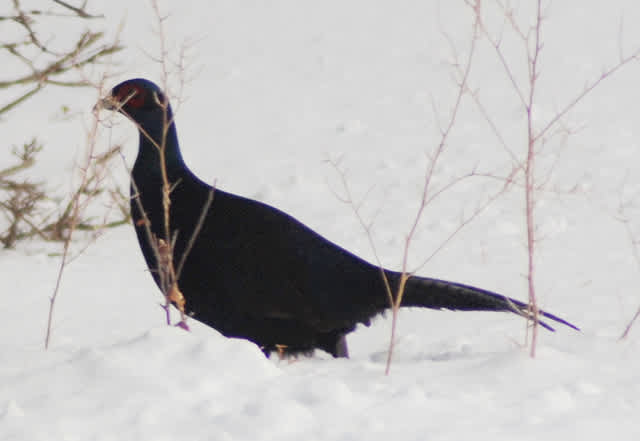Spotting Birds and Other Birding Tips
Ernie Allison 10.10.12

Birding is like a cross between a treasure hunt and a wildlife walk, but a little more complex. It’s not as easy as grabbing your binoculars and heading into the closest forest. In addition to equipment, you need to consider where the birds will be (not always in the trees), how you should dress, how you should move and where you can (and should) hide.

Where to Look
Contrary to human instinct, you won’t always find birds by looking up. While many nest in trees, many also prefer the ground. Take the grouse, turkey and quail for examples. While these birds can fly, they prefer to walk. They build their nests and forage on the ground, so you’re more likely to find them running from bush to bush than you are to find them on a tree branch.
These birds also live on or near the ground, so look closely for nests. Birds like the plover build their nests in a dip in the ground or among rocks. Because the bird is so small, these nests can be easy to overlook.
Other birds prefer to live near water, like the Great Egret. It spends its hunting time wading through water and looking for fish. It builds its nest near these swampy areas, usually in a tree as high as 100 feet off the ground (but still out over water).

What to Wear
There is no definite guide on what exact type of clothing to wear. Camouflage, for example, might be acceptable in Idaho but not in Rhode Island. (In fact, many birders have a negative association with camo because it’s closely identified with hunting.) However, most birders agree that you should wear:
- Dark colors
- Light, noiseless, comfortable clothing
- Clothes you don’t mind getting dirty
The best approach is to blend in with your surroundings. During summer you probably want dark greens and browns. During the fall you might use more reds and oranges. The important thing to remember is that birds see more hues than humans do. This means that the color you wear may not appear the same to you as to birds, so try to choose something that matches colors already found in nature.
Shoes are also an important consideration. Sandals are fine to wear, but only if they fit the terrain. You’ll also want to make sure that any shoes you where don’t make noise (such as flip flops). Closed-toed shoes or boots are usually the best choice if you’re not familiar with the area you’re birding at.

Moving and Hiding
The most important rule: no sudden movements. Keep your movements slow and fluid. This doesn’t mean you should move in slow motion, but it does mean you must be mindful of the bird around you. Remember, this isn’t hunting where the game starts when the bird flies. Once the bird flies away the game is over. So be aware that there are probably birds near you that you don’t know about yet, and move appropriately.
Hiding and waiting is a great tactic, especially if you’re looking to snap a photo or need to see a bird long enough to identify it. Before you decide where to hide, though, find out which birds are in your area. This will guide you in whether your hiding place should be higher (like on a tree branch) or close to the ground (like behind some shrubs near the water). Once you find yourself a place, sit back and wait for about 10 minutes. If you don’t see any birds, move to a new hiding place.
Ernie Allison loves nature. More specifically, he loves birds and wants to teach others how to appreciate them, too. To help further this mission, he writes for the bird feeder provider, birdfeeders.com

